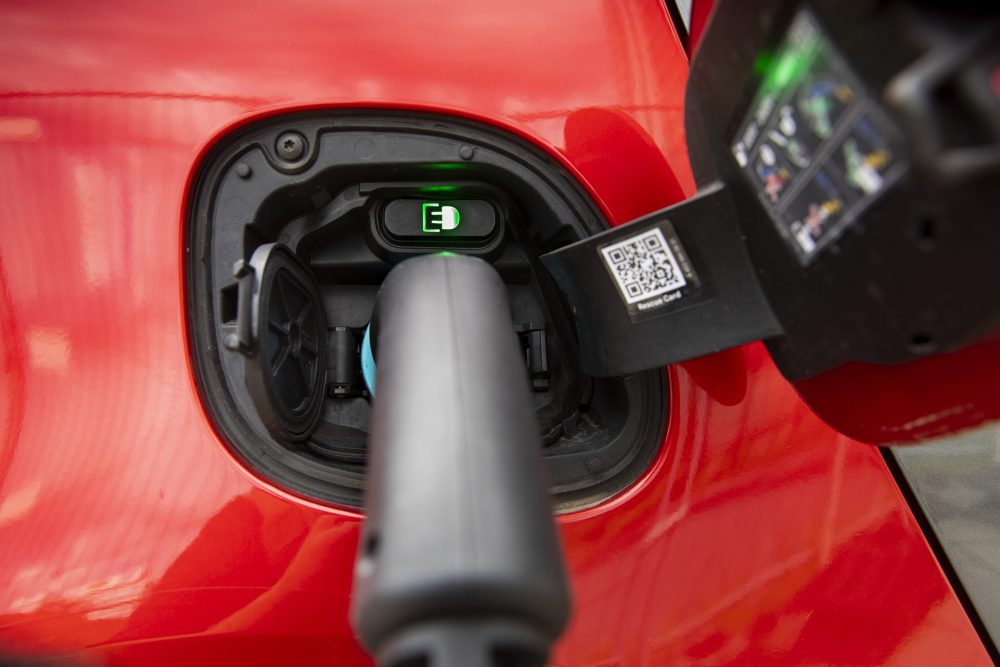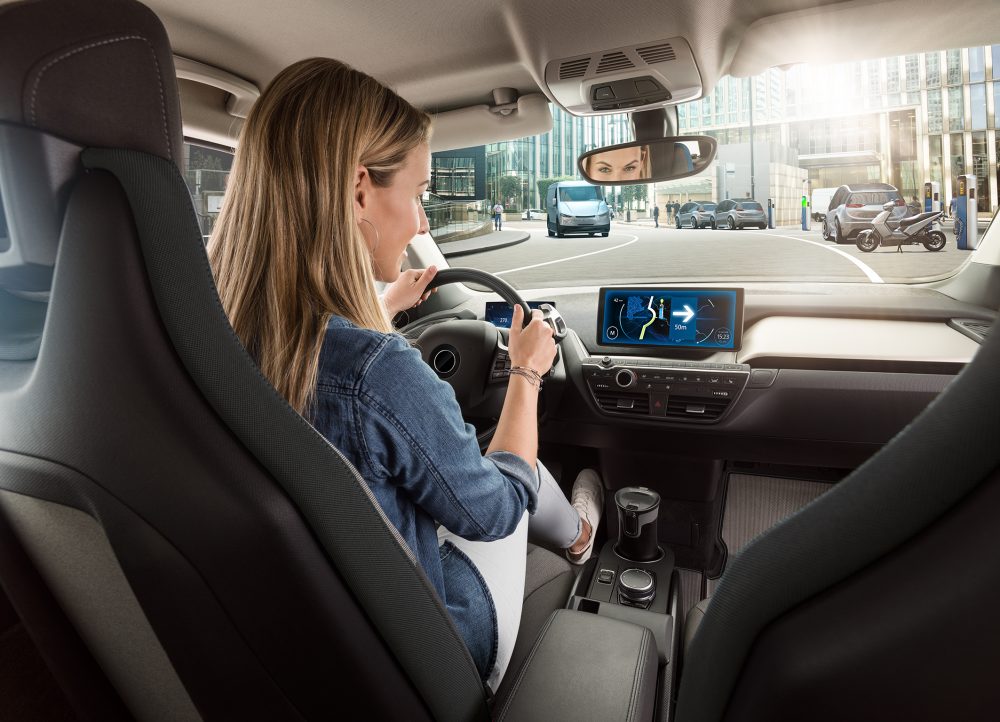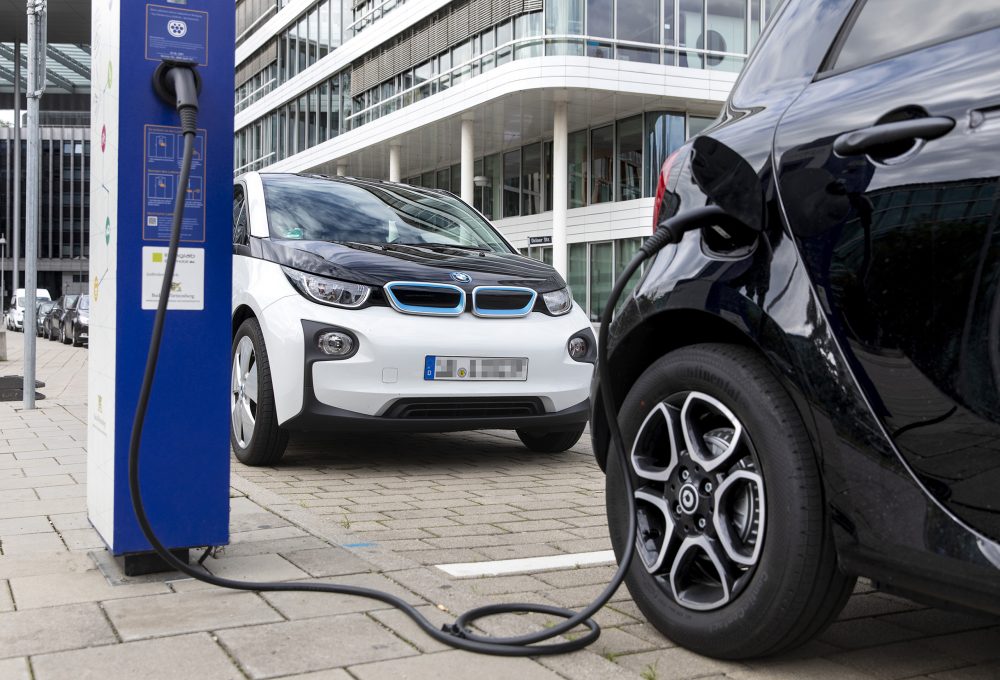Over 150,000 EV charging spots throughout Europe rely on Bosch
Fuss-free recharging. In a nutshell, there is nothing drivers of electric cars want more. They want to quickly find a vacant charge spot, access it without the hassle of authorization and passwords, pay for the electricity without fuss, and make good use of the time it takes to recharge.
In reality, the picture is a different one: drivers of electric cars have an average of six recharging apps on their smartphones, and have to juggle as many as five recharging access cards.
On top of that, the prices at charge spots can vary widely, and users are exasperated by opaque car-electricity prices and a slew of different payment methods. Bosch has set itself the goal of putting an end to this recharging muddle. The company is developing recharging services that now give drivers access to one of the biggest pan-European recharging networks. At the time of writing, they can use their smartphones to find more than 150,000 charge spots in 16 European countries.
It takes just a few clicks to register, recharge, and pay – including cost transparency. “With our recharging services, we are developing a universal key to one of the biggest pan-European recharging networks. In doing so, we are making electromobility even more viable,” says Elmar Pritsch, the president of the Connected Mobility Solutions division of Robert Bosch GmbH. Bosch is offering its recharging solutions to private and business customers. And with location-related services, drivers can make better use of the time it takes to recharge.

Finding charge spots by app
A closely knit network of charge spots is regarded as a crucial factor in the decision to buy an electric car. The energy association BDEW puts the number of public and semi-public charge spots across Germany at 27,730 (figure at the end of March 2020).
Respectable though this figure may be, the recharging access cards of the nearly 200 providers and operators frequently only work at certain charge spots. Added to this, there is a mishmash of terms and conditions, plug types, and charge-spot ratings. Bosch’s Europe-wide recharging network currently counts more than 150,000 charge spots, which drivers can access from one central app platform.
The company has built the network by concluding contracts with operators and using methods such as roaming to connect the charge spots. As a result, more than 27,500 charge spots in Germany are now part of the network. For the drivers of electric cars, this means that they can use the proprietary Bosch app “Charge My EV” or affiliated providers such as “Clever Laden” to find vacant charge spots round the clock – whether in the neighborhood or when traveling.
Moreover, the Bosch recharging network is constantly growing: by the end of 2020, it is expected to include some 200,000 charge spots across Europe.

Less hassle when recharging
In May, there were 288 car-electricity tariffs in Germany alone. For drivers, the end result of these almost endless options is a tariff tangle – all the more so now that many providers are switching from flat-rate charges to billing by the kilowatt-hour.
Bosch takes the chore of comparing these tariffs off drivers’ hands, and gives them a clear breakdown of what they will have to pay at individual charge spots, and what terms and conditions apply. Unpleasant surprises when the final cost is revealed should now be a thing of the past.
The company also wants to put an end to the plethora of recharging access cards. Nearly one in two (45 percent) of all electric-car drivers use two to four different cards to access charge spots, and 15 percent of them use at least five cards.
To use the Bosch recharging services, by contrast, a single sign-on in the smartphone app is all that is needed. This means that it is at last possible for drivers to recharge wherever and whenever they want, without the inconvenience of first having to register at a previously unused charge spot. “Recharging has to be simple and smooth for everyone. Bosch’s smart recharging services are crucial for the widespread acceptance of electromobility,” Pritsch says.
The Bosch solution also makes payment simpler: the app pays using the credit card details uploaded to it, and provides users with a monthly statement of recharging costs.

Recharging with a difference
“In the future, recharging will be more than just filling up with electricity. The key for us here is a new personalization of the entire recharging process,” Pritsch says. In the shape of convenience charging, the company is developing an integrated navigation and recharging solution in which infotainment and the electrical powertrain go hand in hand. This will allow automakers and electric fleet operators to stand out from the competition by offering a new user experience as a relief from the drudgery of recharging.
Convenience charging keeps drivers and electric vehicles constantly up to date on remaining range and where they can recharge their battery. If the originally planned charge spot is occupied, a new recharging stop is automatically rescheduled and the navigation system reprogrammed. Moreover, recommended routes and charge spots are adapted to drivers’ personal preferences. This can include the option to recharge especially quickly or economically, for example.
Drivers can also instruct the system to look for charge spots close to restaurants or with free wi-fi. Convenience charging will allow drivers to make better use of recharging time. They can have purchases delivered directly to the charge spot, for example, and redeem coupons and vouchers in adjacent restaurants and shopping malls. One further plus point is that the navigation and recharging solution will never stop getting better, thanks to machine learning. As a result, recommendations and personalized services will improve with each recharging stop, and recharging will stop being just a chore.

Simple recharging – also for fleets and companies
The Bosch solutions for recharging electric cars frequently also work in the background of the charge-spot finders provided by automakers, fleet operators, and mobility service providers. They use a white-label solution to integrate the recharging network into apps of their own, or directly into their vehicles’ infotainment systems.
The information contained in the network can be supplemented by a company’s own on-premise charge spots, where staff or customers can recharge their vehicles. Here Bosch takes care of incorporating the charge spots, partner management, and billing, and makes the necessary IT infrastructure available.




















